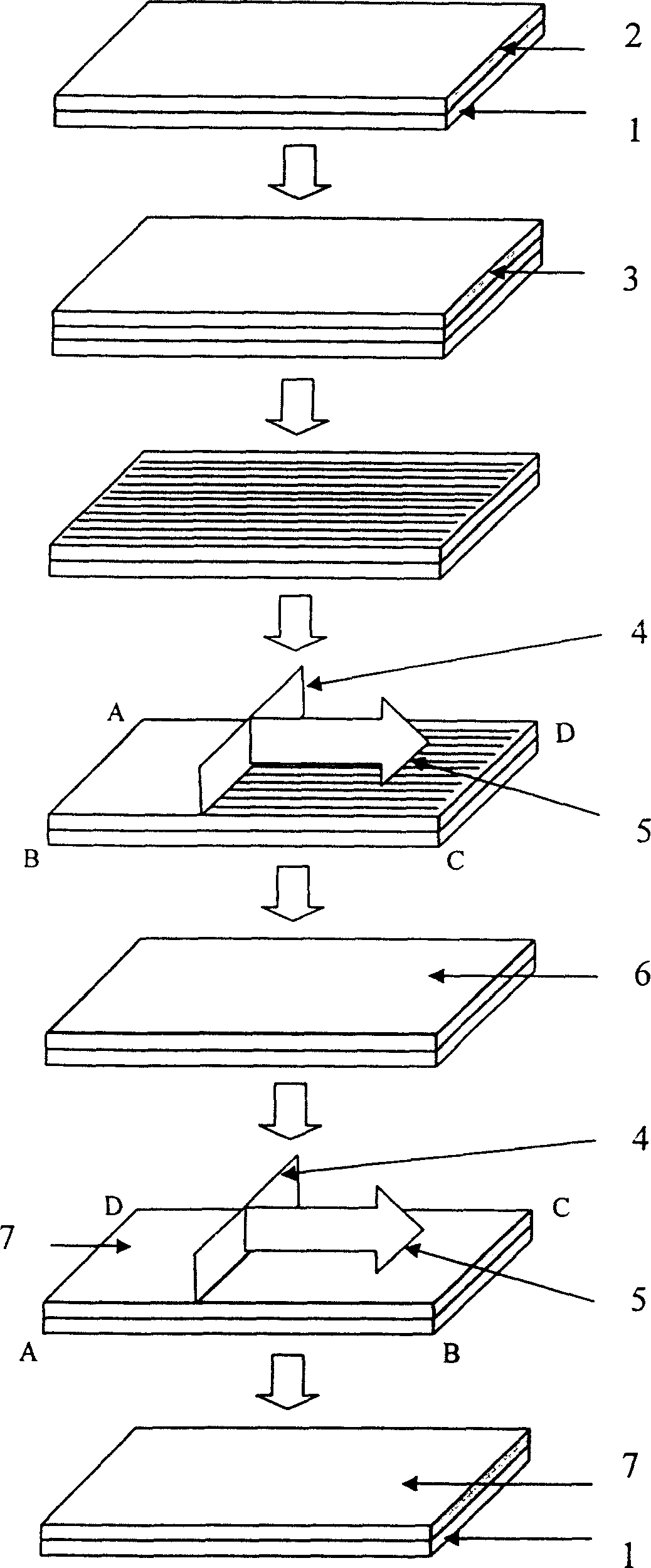Method for preparing polysilicon
A polysilicon and amorphous silicon thin film technology, applied in semiconductor/solid state device manufacturing, electrical components, circuits, etc., can solve the problems of reducing on-state current and device stability, low hydrogen content of polysilicon thin film, and small grain size, etc. Achieve the effect of shortening the crystallization cycle and reducing the substrate temperature
- Summary
- Abstract
- Description
- Claims
- Application Information
AI Technical Summary
Problems solved by technology
Method used
Image
Examples
Embodiment
[0023] A 50nm-thick amorphous silicon film (a-Si) 2 was deposited on a common glass substrate 1 by plasma enhanced chemical vapor deposition (PECVD), the substrate temperature was 220°C, and the radio frequency power density was 0.03W / cm 2 , the gas flow rate is 15 sccm, and the reaction chamber pressure is 80Pa.
[0024] The above-mentioned amorphous silicon sample is placed in a magnetron sputtering table to sputter a 5nm metal nickel film 3, the substrate temperature is 150°C, and the radio frequency power density is 0.03W / cm 2 , the background vacuum is 2×10 -4 Pa.
[0025] The metal nickel thin film 3 is photoetched into a line shape with a width of 2 μm and a pitch of 4 μm using ultraviolet lithography technology.
[0026] Use a XeCl (308nm) laser annealing system to perform a laser annealing on the sample at room temperature, make the laser knife 4 perpendicular to the nickel line, place the sample in the laser knife scanning direction 5 parallel to the nickel line, a...
PUM
 Login to View More
Login to View More Abstract
Description
Claims
Application Information
 Login to View More
Login to View More - R&D
- Intellectual Property
- Life Sciences
- Materials
- Tech Scout
- Unparalleled Data Quality
- Higher Quality Content
- 60% Fewer Hallucinations
Browse by: Latest US Patents, China's latest patents, Technical Efficacy Thesaurus, Application Domain, Technology Topic, Popular Technical Reports.
© 2025 PatSnap. All rights reserved.Legal|Privacy policy|Modern Slavery Act Transparency Statement|Sitemap|About US| Contact US: help@patsnap.com

